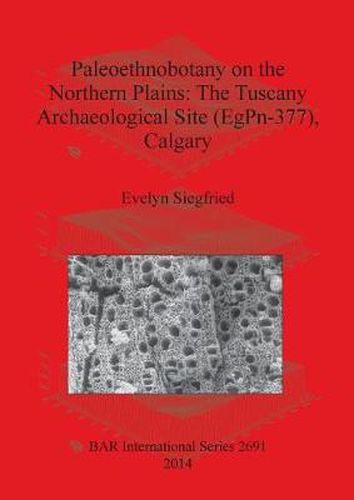Readings Newsletter
Become a Readings Member to make your shopping experience even easier.
Sign in or sign up for free!
You’re not far away from qualifying for FREE standard shipping within Australia
You’ve qualified for FREE standard shipping within Australia
The cart is loading…






This title is printed to order. This book may have been self-published. If so, we cannot guarantee the quality of the content. In the main most books will have gone through the editing process however some may not. We therefore suggest that you be aware of this before ordering this book. If in doubt check either the author or publisher’s details as we are unable to accept any returns unless they are faulty. Please contact us if you have any questions.
The Tuscany habitation site (EgPn-377) located in northwest Calgary was excavated between 1995 and 1997. The site stratigraphy of the large depression contained a series of buried paleosols situated between Mazama tephra above, dating to 6730 +- 40 14C years BP, and Glacial Lake Calgary sands below, dating to approximately 13,900 calendar years ago. These paleosols comprised the focus of this volume. One of the research objectives was to examine the site for spatial information via the processing of bulk sediment samples. Such samples had the potential to yield information on the distribution of small-scale archaeological remains throughout the site. Sediment samples representing 1% volumes were collected from each excavated level of each unit in the site grid. Through flotation processing an inventory of bone, lithics, insects, fungal spores, mollusks and charred macrobotanical remains were recovered. The charred macrobotanical remains were the focus of this research. Though the inventory is small, it provides a representative sample of the remains of plants that grew locally in the depression through the early Holocene. The charred botanical remains were compared with pollen and soil studies along with modern vegetation and climate records to develop a model for open parkland in the area for the early Holocene. The reconstructed landscape appears to have provided a habitat for a broad spectrum of fauna along with a diverse inventory of potentially useful plants for early Holocene peoples to exploit.
$9.00 standard shipping within Australia
FREE standard shipping within Australia for orders over $100.00
Express & International shipping calculated at checkout
This title is printed to order. This book may have been self-published. If so, we cannot guarantee the quality of the content. In the main most books will have gone through the editing process however some may not. We therefore suggest that you be aware of this before ordering this book. If in doubt check either the author or publisher’s details as we are unable to accept any returns unless they are faulty. Please contact us if you have any questions.
The Tuscany habitation site (EgPn-377) located in northwest Calgary was excavated between 1995 and 1997. The site stratigraphy of the large depression contained a series of buried paleosols situated between Mazama tephra above, dating to 6730 +- 40 14C years BP, and Glacial Lake Calgary sands below, dating to approximately 13,900 calendar years ago. These paleosols comprised the focus of this volume. One of the research objectives was to examine the site for spatial information via the processing of bulk sediment samples. Such samples had the potential to yield information on the distribution of small-scale archaeological remains throughout the site. Sediment samples representing 1% volumes were collected from each excavated level of each unit in the site grid. Through flotation processing an inventory of bone, lithics, insects, fungal spores, mollusks and charred macrobotanical remains were recovered. The charred macrobotanical remains were the focus of this research. Though the inventory is small, it provides a representative sample of the remains of plants that grew locally in the depression through the early Holocene. The charred botanical remains were compared with pollen and soil studies along with modern vegetation and climate records to develop a model for open parkland in the area for the early Holocene. The reconstructed landscape appears to have provided a habitat for a broad spectrum of fauna along with a diverse inventory of potentially useful plants for early Holocene peoples to exploit.